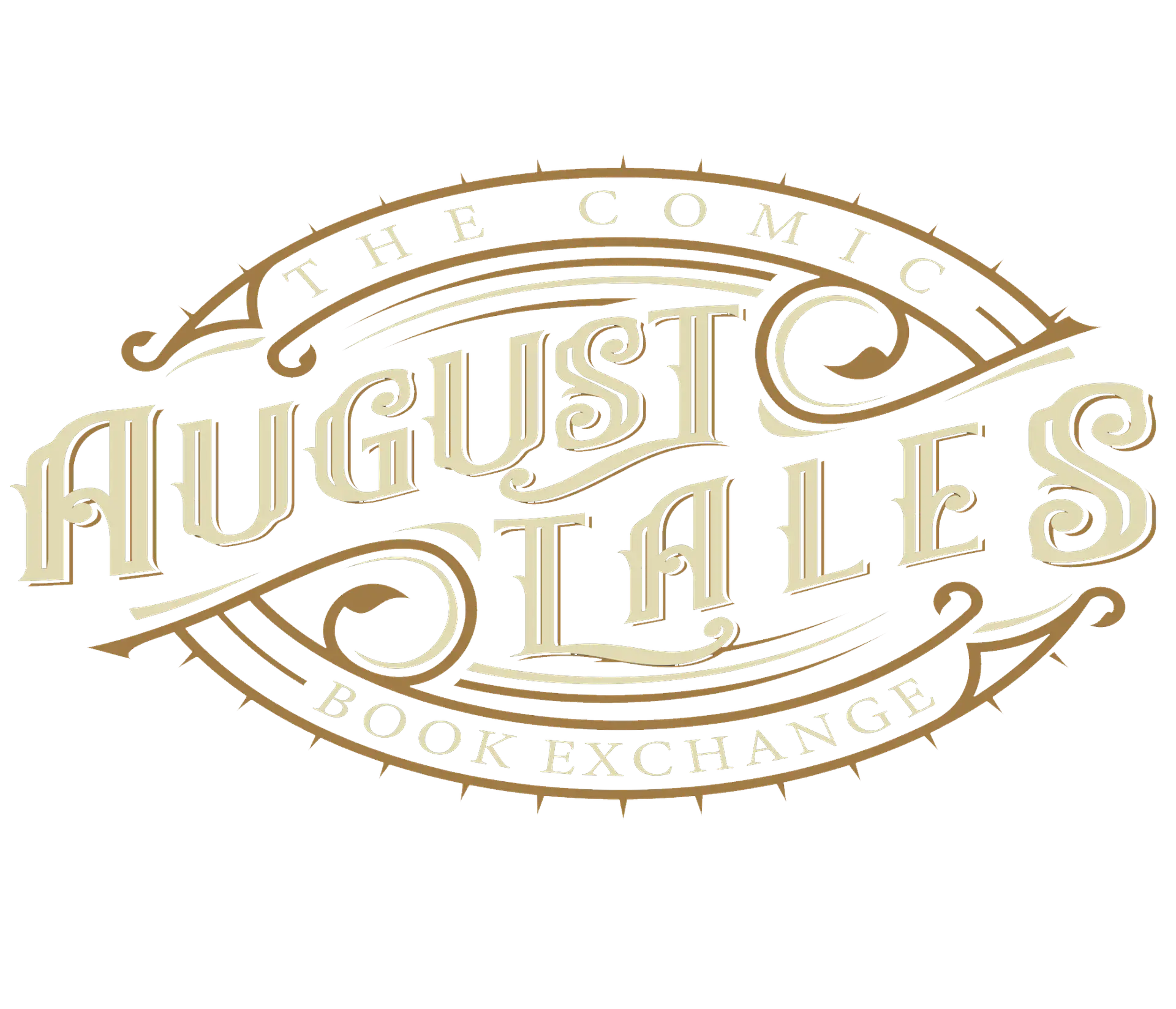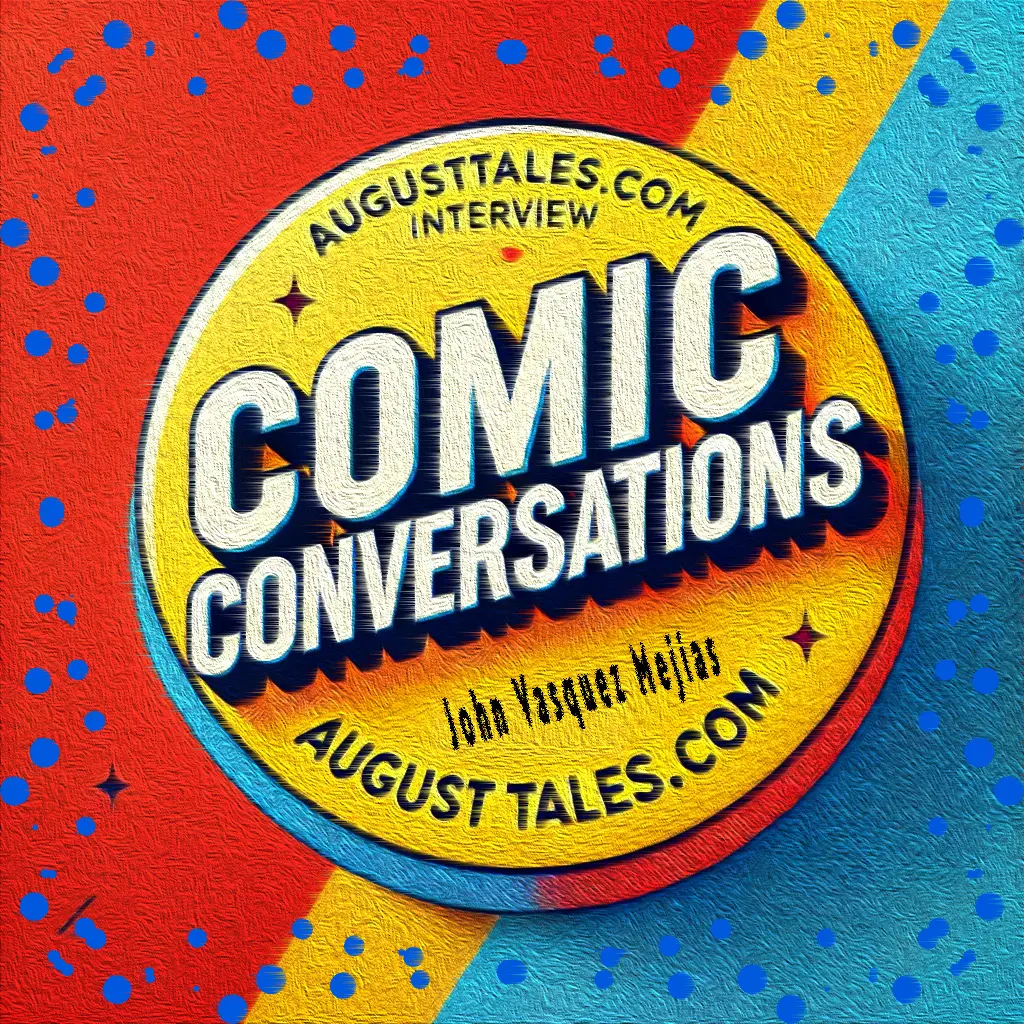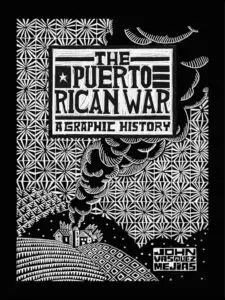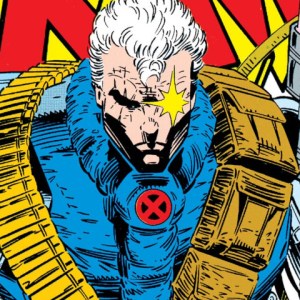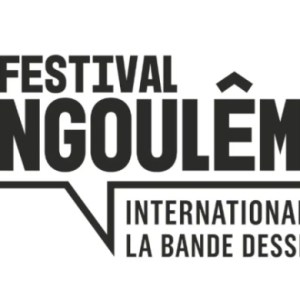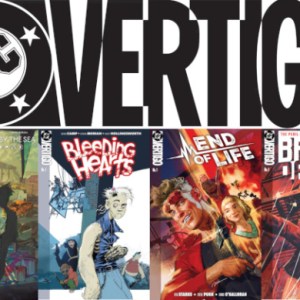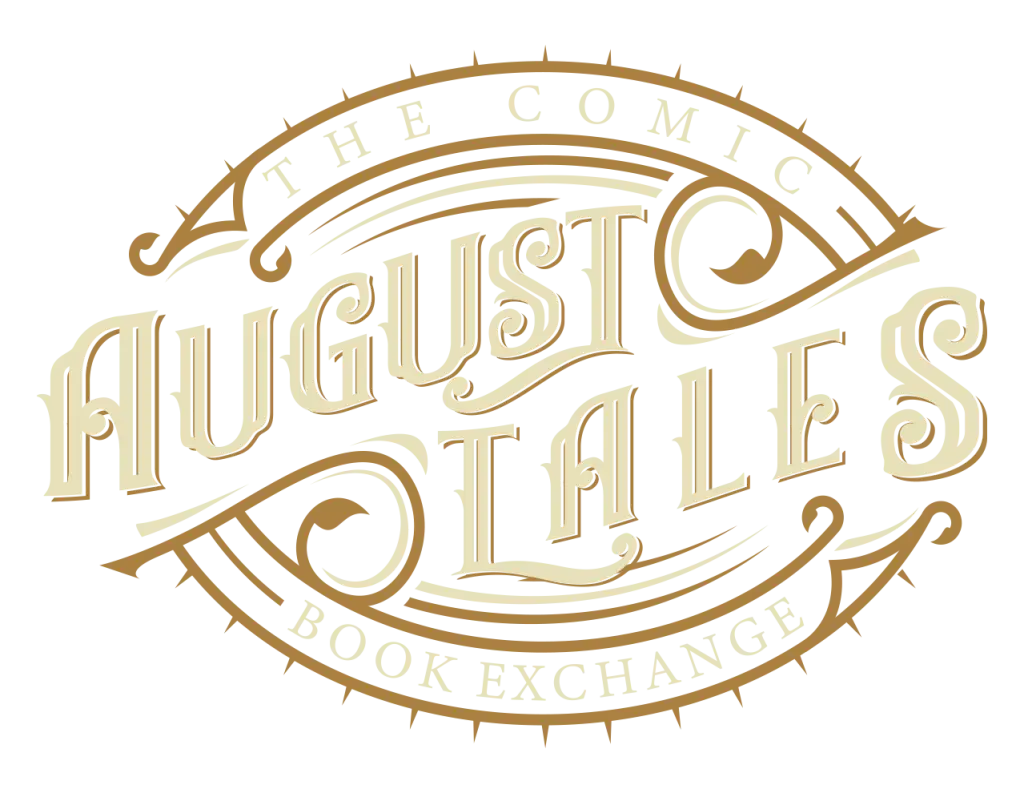John Vasquez Mejias’ “The Puerto Rican War”
John Vasquez Mejias, a renowned artist and educator, has captured the hearts and minds of many with his graphic novel “The Puerto Rican War.” The book is a significant work that delves into the complexities of Puerto Rican history and identity, using the medium of comics to explore themes of resistance, colonization, and cultural pride. Recently, I had the privilege of attending his presentation at the Mark Twain Museum in Hartford, CT, and followed it up with a personal interview, where Mejias shared insights into his artistic process, the challenges of publishing, and his future projects.
Background and Education
John Vasquez Mejias’ journey into the world of comics and printmaking began with his deep connection to his Puerto Rican heritage. Mejias, who grew up surrounded by stories of his ancestors, was always drawn to the power of narrative. His passion for storytelling eventually led him to study art, where he honed his skills in printmaking and illustration. Mejias’ education and personal experiences have greatly influenced his work, infusing it with authenticity and cultural significance.
Mejias has also spent many years as an educator, a role that has informed much of his work. His teaching experience is evident in the way he approaches complex historical and political themes, making them accessible to a broader audience through his art. This ability to educate through storytelling is a hallmark of Mejias’ work, particularly in “The Puerto Rican War.”
The Puerto Rican War: A Visual and Narrative Masterpiece
“The Puerto Rican War” is more than just a graphic novel; it is a powerful exploration of Puerto Rico’s tumultuous history and its ongoing struggle for independence and identity. Mejias’ work is characterized by its stark black-and-white illustrations, which draw heavily on the traditions of printmaking. The use of newsprint for the initial publication was a deliberate choice, reflecting both the aesthetic of classic comics and the economic realities of independent publishing.
During our interview, Mejias revealed that the decision to use newsprint was initially born out of necessity rather than choice. However, he later came to appreciate the texture and authenticity that newsprint brought to his work, likening it to the tradition of iconic publications like Mad Magazine. This texture enhances the raw emotion and historical weight of the narrative, creating a visceral reading experience.
Mejias’ use of negative space is particularly striking, drawing comparisons to the work of Frank Miller, though Mejias himself credits German expressionism and artists like Frans Masereel as more direct influences. This intentional use of black and white not only emphasizes the contrast between light and darkness, both literally and metaphorically, but also challenges the reader to engage with the story on a deeper level.
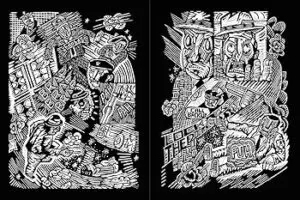
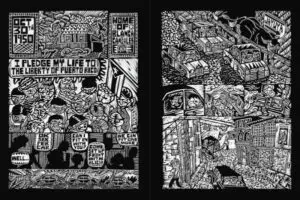
Presentation at the Mark Twain Museum
The presentation at the Mark Twain Museum was a testament to Mejias’ ability to connect with his audience, both as an artist and a storyteller. The event was well-attended, with a diverse audience eager to learn more about Puerto Rican history and the creative process behind “The Puerto Rican War.”
Mejias spoke passionately about the importance of telling stories that matter, particularly those that have been marginalized or forgotten. He emphasized the need for representation in all forms of media, and how “The Puerto Rican War” serves as a means of reclaiming and preserving Puerto Rican history. His presentation was not only informative but also deeply personal, as he shared his own experiences and the impact that creating this work has had on his life.
One of the most memorable moments of the presentation was when Mejias discussed the challenges of editing and simplifying the story. He mentioned that while he initially struggled with the limitations of the comic format, he ultimately embraced the simplicity, focusing on clarity and impact. Mejias also touched on the importance of Alita LeBron, a figure who plays a significant role in Puerto Rican history, and his decision to dedicate an entire book to her story.
Insights from the Interview
In our interview, Mejias provided additional insights into his artistic process and the reception of his work. He expressed a deep sense of satisfaction with how “The Puerto Rican War” has been received, noting that it resonates with people on multiple levels. Whether they are Puerto Rican or simply interested in human rights and history, readers find the story compelling and emotionally powerful.
Mejias also shared his thoughts on the future of his work. He is currently researching and writing a new book about Alita LeBron, which promises to be as impactful as “The Puerto Rican War.” His dedication to preserving and sharing Puerto Rican history is unwavering, and it is clear that his work will continue to inspire and educate for years to come.
Last Looks
“The Puerto Rican War” is an extraordinarily impressive work that left a lasting impact on us. This graphic novel is not only a powerful narrative exploring Puerto Rican history and identity but also a stunning piece of art. The intricate details, bold use of black-and-white imagery, and the deep emotional resonance make it a must-read. John Vasquez Mejias masterfully blends storytelling with visual artistry, creating a work that is both educational and visually captivating.
We loved every aspect of “The Puerto Rican War,” and we believe it deserves a place on your bookshelf as both a gripping graphic novel and a beautifully crafted piece of art. As part of our Amazon Associates program, we do receive a very small financial credit for each purchase made through this link, which helps us continue to bring you reviews and recommendations of exceptional books. Thank you for your support!
Read this article and more at August Tales Comics. Your go-to site for trade paperback exchanges and comic book news! Trade. Read. Repeat.
#comics #comicbooks #graphicnovel #graphicnovels #augusttales
